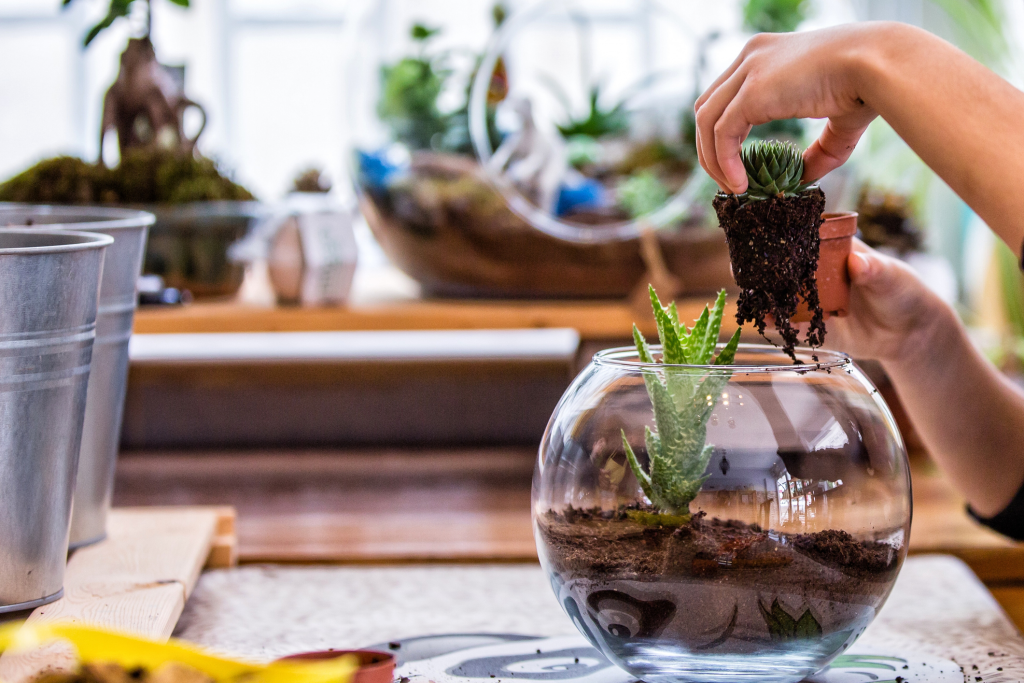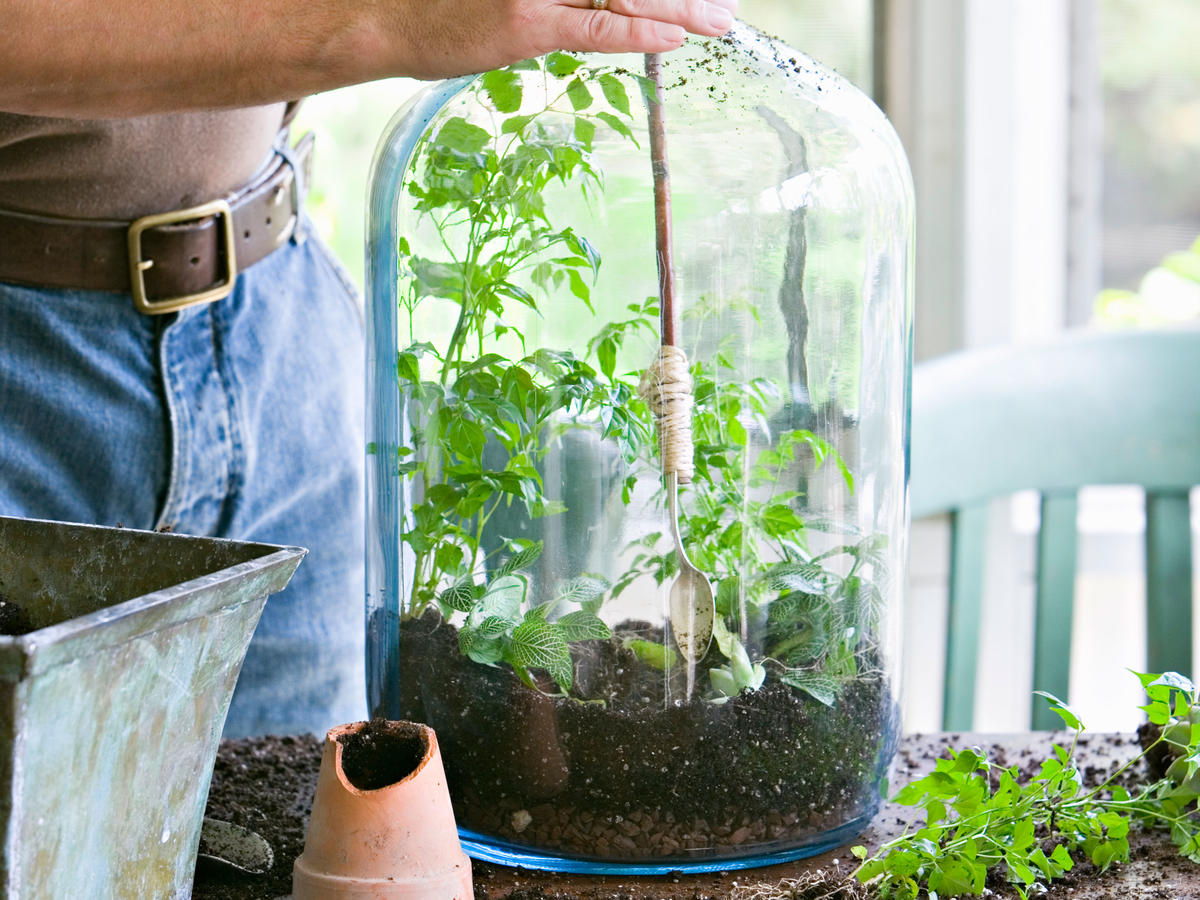
Home Terrariums: Creating Miniature Forests, Deserts and Swamps (Part 4)
Welcome back guys,
After three articles, you must have now experienced (through my words, of course) the beauty of setting up and stocking a small terrarium in your house.
Today, in this last post, we shall learn how to keep these terrariums in good condition.
Now, A Quick Recap On The Last Three Articles:

First Article:
“To start a miniature forest, go to the woods and cut out a moss-covered section of the ground, just large enough to fit in your terrarium. Lift up the carpet like section with a trowel or spade and wrap it carefully in aluminum foil, waxed paper or moistened newspapers for the trip home…”
Second Article:
“For a desert terrarium, spread a thin layer of soil over the foundation and then several inches of clean white sand over the soil. If you prefer, you can use brown sand or yellow brick broken into very small pieces. Your imagination and your pocketbook can be your guides as to what desert vegetation to use…”
Third Article:
“A sunny swamp is a paradise for naturalists. You can make such a swamp in your terrarium or even in a glass tumbler. By judiciously placing stones, pieces of wood or smooth-edged fragments of glass or china, you can have a pool with a bank sloping up to a comparatively dry level. To keep your swamp as moist as possible, it would be well to provide it with a glass lid. In such a terrarium, if there is enough light and if the temperature is not too high, many plants will grow with a beauty and luxuriance they never show in a less humid atmosphere…”
So, How To Keep Your Terrarium In Condition?

There are certain general rules for maintaining a terrarium of any type. You should keep the glass sparklingly clean. It is remarkable how beautiful plants and small animals such as insects, look through the clean glass in the dustless atmosphere of a terrarium. When the glass becomes fogged, wipe off the moisture with a soft cloth. If algae begin to form a green coating on the glass, remove them with a damp cloth.
You should always consider the problem of visibility, since you are maintaining the terrarium for your viewing pleasure. A terrarium with much deep green in it usually looks best if you can stand it on white cloth or paper and put a white backdrop behind it. White or other light-colored pebbles, shells or sand will brighten your miniature jungles or groves and make the details of dark or mossy vegetation visible. Try to include plants with bright flowers or fruits and those with brightly colored, veined or mottled leaves. Chickweed will produce many starry white blossoms – the bright red fruits of partridge berry will glisten for months.
Regulate the humidity and the amount of light reaching the container according to the plants or animals that you wish to maintain. Over a shallow container without a cover, the relative humidity will be just a little higher than in the rest of the room. In steam-heated apartments, the air may be drier than in a desert. In a sealed terrarium, on the other hand, the relative humidity maybe 100, which means that the air is completely saturated with moisture.
Plants in terrarium sometimes languish because of too little light, but perhaps the chief killer of terrarium plants and animals is too much heat. A closed glass container is a heat trap because light rays pass through the glass almost instantaneously while heat escapes through the same glass much more slowly. Since most of the light rays turn to heat when they hit a dark solid surface, the temperature inside a closed terrarium may be very hot when the air outside is mild and pleasant. Do not let your terrarium stand too long in sunlight or near a radiator – try to keep the temperature inside it as close to 70 °F. as possible, unless it houses reptiles, in which case a temperature of 80 °F. is better. I have seen fine closed humid terrariums in rooms kept at a temperature of 60 ° or less.
